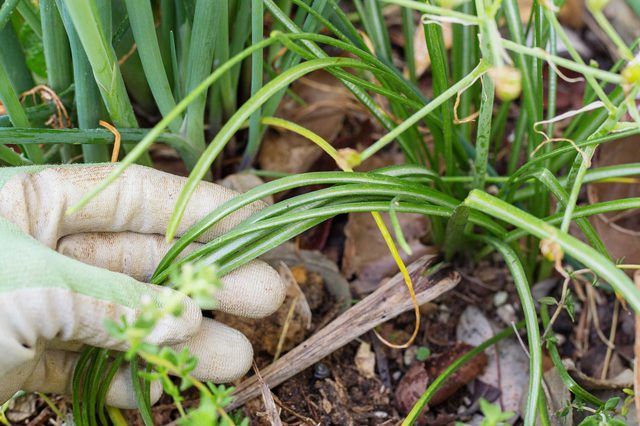Bulbs
Flower Basics
Flower Beds & Specialty Gardens
Flower Garden
Garden Furniture
Garden Gnomes
Garden Seeds
Garden Sheds
Garden Statues
Garden Tools & Supplies
Gardening Basics
Green & Organic
Groundcovers & Vines
Growing Annuals
Growing Basil
Growing Beans
Growing Berries
Growing Blueberries
Growing Cactus
Growing Corn
Growing Cotton
Growing Edibles
Growing Flowers
Growing Garlic
Growing Grapes
Growing Grass
Growing Herbs
Growing Jasmine
Growing Mint
Growing Mushrooms
Orchids
Growing Peanuts
Growing Perennials
Growing Plants
Growing Rosemary
Growing Roses
Growing Strawberries
Growing Sunflowers
Growing Thyme
Growing Tomatoes
Growing Tulips
Growing Vegetables
Herb Basics
Herb Garden
Indoor Growing
Landscaping Basics
Landscaping Patios
Landscaping Plants
Landscaping Shrubs
Landscaping Trees
Landscaping Walks & Pathways
Lawn Basics
Lawn Maintenance
Lawn Mowers
Lawn Ornaments
Lawn Planting
Lawn Tools
Outdoor Growing
Overall Landscape Planning
Pests, Weeds & Problems
Plant Basics
Rock Garden
Rose Garden
Shrubs
Soil
Specialty Gardens
Trees
Vegetable Garden
Yard Maintenance
How to Grow Star of Bethlehem Flowers
How to Grow Star of Bethlehem Flowers. Like a fine arts museum observing holiday hours, star-of-Bethlehem (*Ornithogalum umbellatum*) shares its picturesque, green-striped white blooms all too briefly. For a few weeks each spring, they open to the world from mid-morning to late afternoon on sunny days, and then they're gone. Perennial in U.S....
Like a fine arts museum observing holiday hours, star-of-Bethlehem (Ornithogalum umbellatum) shares its picturesque, green-striped white blooms all too briefly. For a few weeks each spring, they open to the world from mid-morning to late afternoon on sunny days, and then they're gone. Perennial in U.S. Department of Agriculture plant hardiness zones 4 through 9, dainty star-of-Bethlehem bulbs multiply rapidly, as if to make up for their fleeting glory with ever-larger displays. Grow them where their enthusiastic spread won't crowd other plants, and their toxic compounds don't endanger children or pets.
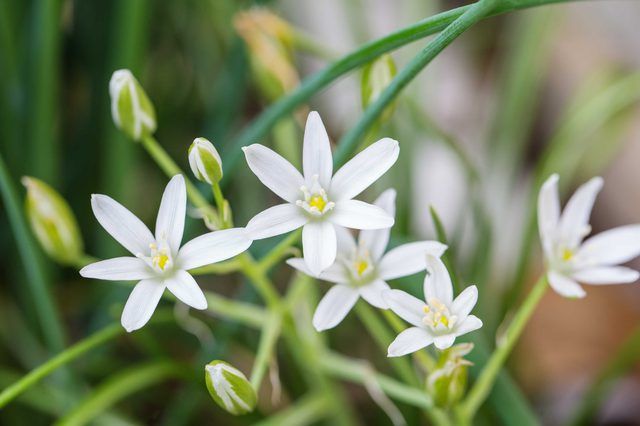
Star-of-Bethlehem flowers grow best with at least 4 to 6 hours of daily sun. A combination of morning and afternoon sun is acceptable. As bulbs, they need well-draining soil where water doesn't puddle in winter and spring.
To ensure vigorous roots, sprinkle 2 tablespoons of 0-46-0 granulated superphosphate fertilizer over each 10 square feet of soil, work it into the top 6 to 8 inches with a tiller and water well.
Space the tiny bulbs about 2 to 3 inches apart. Twenty to 25 of them fill 1 square foot of soil.
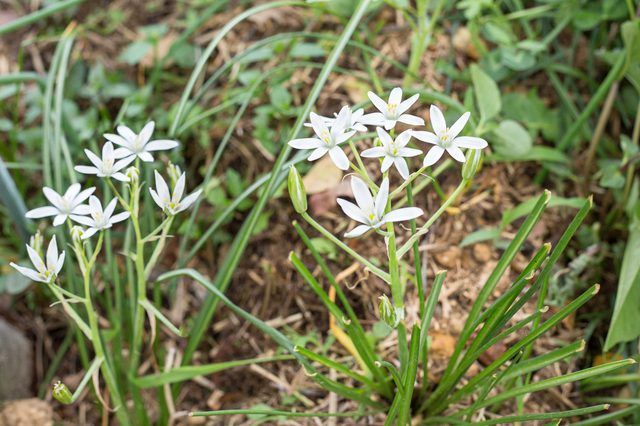
Star-of-Bethlehem plants don't need regular fertilizing. When new leaves appear in spring, side dress them with fertilizer at one-half the manufacturer's recommended rate. A 1-2-1 ratio fertilizer works well for bulbs in clay or loamy soil; for sandy soil use a 1-2-2 ratio
One 4-8-4 fertilizer recommends 2 to 4 tablespoons of granules for established plants. Star-of-Bethlehem would get one-half that, or a single application of 1 to 2 tablespoons per plant -- in spring.
Sprinkle the fertilizer evenly on the ground around each plant, keeping it off the leaves. Scratch the granules into the soil's surface so the roots aren't disturbed, and water well.
Fertilizers come in different strengths, so always check the label's recommended application amounts.
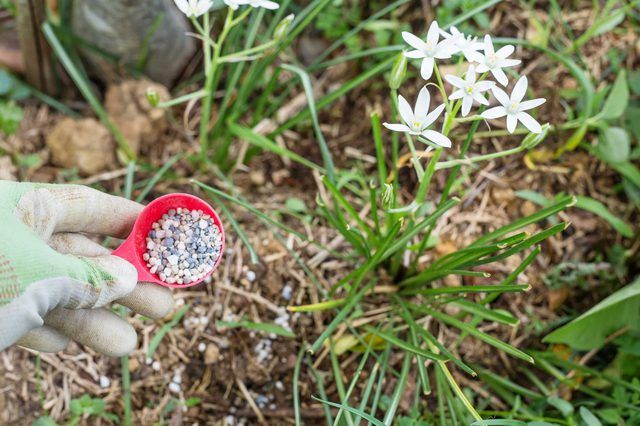
From the time flower buds appear in spring until the leaves die back in summer, star-of-Bethlehem needs 1 inch of rainfall or supplemental water each week. Six gallons of water per 10 square feet of soil amounts to 1 inch.
To avoid overwatering the bulbs during rainy weather, use a rain gauge. Check the rain in the gauge weekly during wet weather and water whenever it measures less than 1 inch.
If the gauge registers 1/3 inch of rainfall, for example, give the plants 4 gallons of water for every 10 square feet of soil. Water slowly from beneath the leaves, stopping periodically while the water penetrates down to the roots.
Stop watering after the foliage dies and the bulbs go dormant in summer to reduce the risk of bulb rot.
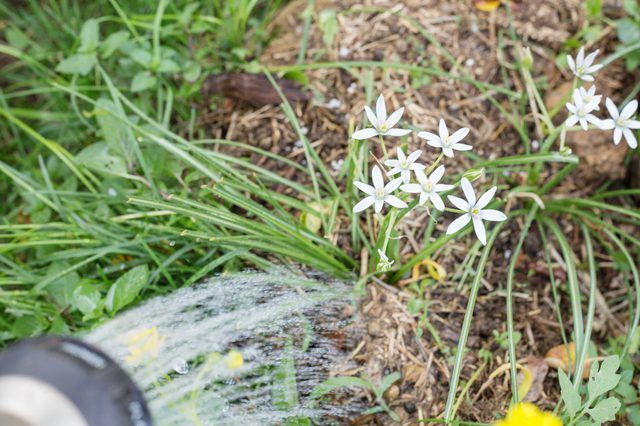
It's perfectly natural for star-of-Bethlehem's grassy foliage to droop when the flowers appear, and to turn yellow when they die. The plants looks their worst during the post-bloom period, but their limp leaves are still busy photosynthesizing food for the next growing season.
Wait until they turn completely yellow before pulling them up by hand. Use taller, summer-blooming flowers such as summer snapdragon (Angelonia angustifolia), hardy in USDA zones 9 through 11, to camouflage the dying foliage.
When removing the leaves, wear waterproof gloves for protection from star-of-Bethlehem's skin-irritating sap.
